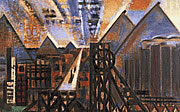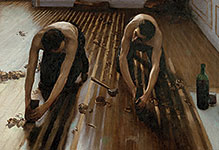
Daily Life
Work, Leisure, Clothing and Textiles, Politics and Portraits, Furniture, Houshold, Funerals, Death, Murder, Family.

#03030225
Stèle funéraire peinte de Sidon (painted funerary stele). 2nd-1st century BCE;...

#03030226
Stèle funéraire peinte de Sidon (painted funerary stele). 2nd-1st century BCE;...

#03030227
Stèle funéraire peinte de Sidon (painted funerary stele). 2nd-1st century BCE;...

#03030228
Stèle funéraire peinte de Sidon (painted funerary stele). 2nd-1st century BCE;...

#03030237
Relief of a harvest scene from the mastaba of Ipi. Saqqara, Egypt; Old Kingdom...

#03030257
The lid of one of four canopic jars found in tomb No.55 in the Valley of the Kin...

#03030266
An Egyptian terracotta figurine showing a man driving an Archimedean screw as a...

#03030267
Mural from the Thracian Tomb of Kazanlak. Kazanlak, Valley of Roses, Bulgaria;...

#03030314
Pottery cinerary urn shaped like a hut, early Italian Iron Age, Villanova, 900-8...

#03030324
Pottery jug from westernTurkey, Yortan culture, 2700-2500 BCE. Black-slipped and...

#03030325
Black slipped and burnished jug in the shape of a bird, from Turkey, Yortan cult...

#03030330
Ivory figure of a griffin-headed demon, Urartian, from Toprakkale in eastern Ana...






